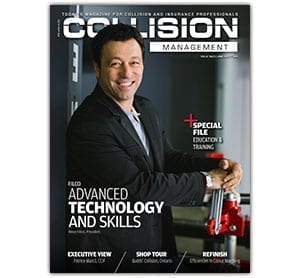The June issue of Collision Management is now available online. You can flip through it here, but first, a few words from the Editor-in-Chief of Collision Management, Huw Evans.
Knowledge is Power
Learning fuels development, and development enables success.
There’s no question that training is one of the most vital aspects of the collision repair industry. Without learning, your people cannot grow or reach their full potential.
It takes a combination of both knowledge and skill to allow you to get the most out of something, whether it’s a particular tool or piece of equipment, repair process, taking care of customers or handling claims. And as the industry becomes ever more complex and technology based, good, quality training becomes ever more essential.
Our cover story this issue looks at the investments made by Filco in advanced skills development, including the opening of a dedicated training centre at its recently renovated Montreal headquarters. The new facility features the latest 3D measuring equipment, welding apparatus, not to mention a complete spray booth setup that allows Filco to train collision repair staff under real world conditions as well as help shops select equipment that is most suited to their needs.
Finding and retaining
Moving onto our Special File section, we look to the future, analyzing the current situation regarding apprenticeships and how shops and networks can develop strategies to not only find the next generation of great collision repair professionals but learn how to effectively mentor and support their growth within the industry. We also examine how good education plays a key part in two of the most critical parts of the collision repair process: estimating and pre and post repair scanning.
It may be somewhat of a well-worn cliché, but the fact remains that our sector, not to mention the entire automotive industry, is witnessing its most rapid rate of change since cars were invented. Corporate Average Fuel Economy mandates and safety regulations are the prime drivers behind it, but so are consumer expectations.
I’ve been involved with the collision repair industry for nearly two decades, and within that relatively short timeframe the business has transformed. Today, most shops I visit boast a level of professionalism and expertise that was scarcely imaginable 18 years ago. And while trends and legislative pressure have been part of that, I’d like to think a bigger one has been education and training. It’s something we as an industry should be tremendously proud of.



